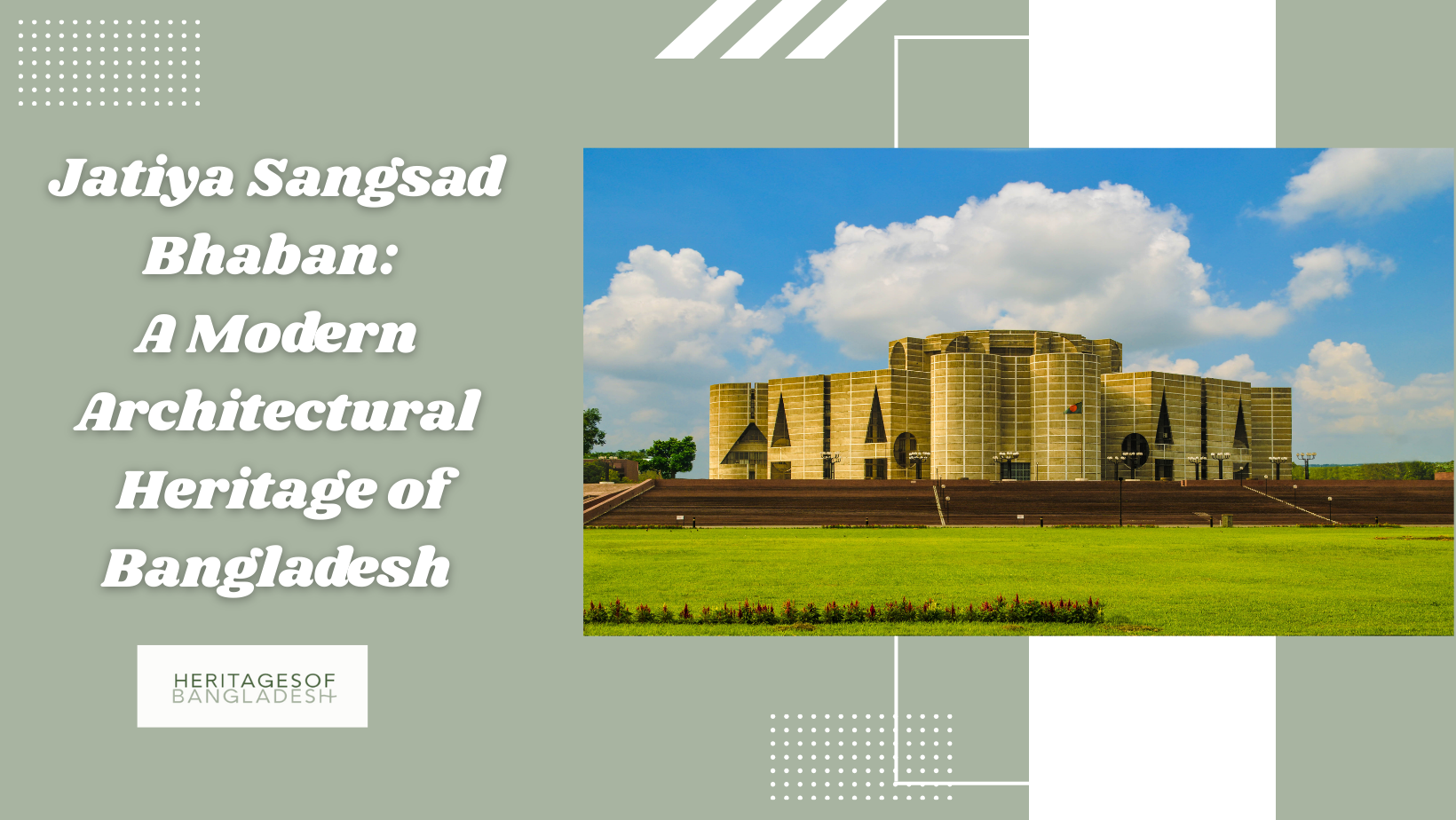When we think of heritage, our minds often travel back to centuries-old mosques, temples, or ancient ruins. Yet, in the heart of Dhaka stands a masterpiece of modern architecture that has become a proud symbol of Bangladesh’s identity—Jatiya Sangsad Bhaban (National Parliament Building). Designed by world-renowned American architect Louis I. Kahn, this monumental complex not only serves as the house of Bangladesh’s National Parliament but also represents the fusion of art, culture, and functionality in architecture.
A Masterpiece by Louis Kahn
Construction of Jatiya Sangsad Bhaban began in 1961, during the period of East Pakistan, and continued after Bangladesh’s independence, being completed in 1982. Louis Kahn envisioned the building as more than a political institution—it was to be a symbol of democracy and unity for the people.
Kahn’s architectural philosophy was rooted in simplicity, light, and geometric precision. The building’s design employs cylinders, triangles, and rectangles, which interact harmoniously with light and shadow. The central assembly hall, surrounded by eight peripheral blocks, creates a balanced yet monumental structure.
Harmony with Nature
One of the most striking features of the Jatiya Sangsad complex is its integration with the surrounding landscape. The main building is set amidst an artificial lake, symbolizing purity and openness. The water not only enhances the building’s grandeur but also works as a cooling system, reflecting Kahn’s deep respect for climate-conscious architecture.
Large geometric cutouts on the façade allow natural light to flood the interiors, reducing the reliance on artificial lighting. This sustainable design makes the building stand out as both futuristic and timeless.
Symbol of Democracy and Identity
The Jatiya Sangsad Bhaban is not just an architectural marvel—it is a symbol of Bangladesh’s sovereignty, democracy, and resilience. After the Liberation War of 1971, the building became a space where the dreams and aspirations of millions found a voice. It continues to host parliamentary sessions that shape the nation’s future.
Why It Is a Heritage Landmark
Although relatively modern compared to ancient sites like Paharpur or Bagerhat, Jatiya Sangsad Bhaban holds an equal place in Bangladesh’s heritage for several reasons:
- Architectural Brilliance: Globally recognized as one of the finest examples of modernist architecture.
- Cultural Identity: Represents the pride and independence of the Bangladeshi nation.
- Tourist Attraction: Visitors from across the world come to witness its unique design.
- Timeless Design: A blend of modern architecture with cultural symbolism ensures its place in history.
Global Recognition
Architects and critics worldwide consider the Jatiya Sangsad Bhaban one of the greatest works of the 20th century. It has been featured in architectural journals, documentaries, and academic studies, cementing its position as a global architectural landmark.
Conclusion
The Jatiya Sangsad Bhaban is not just a building—it is a living heritage of Bangladesh, reflecting the nation’s struggle, pride, and forward-looking vision. Its bold yet graceful design makes it a timeless monument, proving that heritage is not only about the past but also about the creations that define our present and inspire the future.

